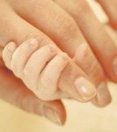|
|
Studies that compare pregnancy outcomes must
have an adequate number of subjects to detect a difference between the
exposed group and a control group. As the the table below illustrates large
sample sizes are necessary to show a twofold increase in adverse pregnancy
outcomes. To detect smaller differences requires a larger sample size.
To detect moderately common birth defects such as cleft
lip or palate requires a sample size that is prohibitive for most controlled
studies.
|
Sample Sizes Necessary to Detect a Two Fold (100%) Increase
In Selected Adverse Pregnancy Outcomes (80% power, 5% Level of Significance)
| Outcome |
Denominator |
Population rate |
Number of Exposed
Pregnancies Needed |
| Spontaneous Abortion |
Enrolled Pregnancies |
15/100 |
266 |
| Low Birth Weight |
Live Births |
10/100 |
261 |
| Fetal Death |
Live births
plus fetal deaths |
3/100 |
684 |
| Any major birth defect |
Live Births |
3/100 |
684 |
| Cardiovascular defect |
Live Births |
1/115 |
2196 |
| Cleft lip with or without palate |
Live births |
1/930 |
17311 |
Stickler syndrome
(or other rare birth defect) |
Live births |
1/10000 |
185,539 |
Adapted from: Draft Guidance for Industry on Establishing
Pregnancy Registries . U.S. Department of health and Human Services June , 1999.
|
Please review the
Disclaimer before using this site.
Copyright © 2002-2004 by Focus Information Technology. All rights reserved.
The information provided on this site is updated periodically. It is likely that the information presented will not include all information currently available. Keep in mind the limitations of this information.
Created: 1/17/20004
Updated: 1/17/2004
|
|
